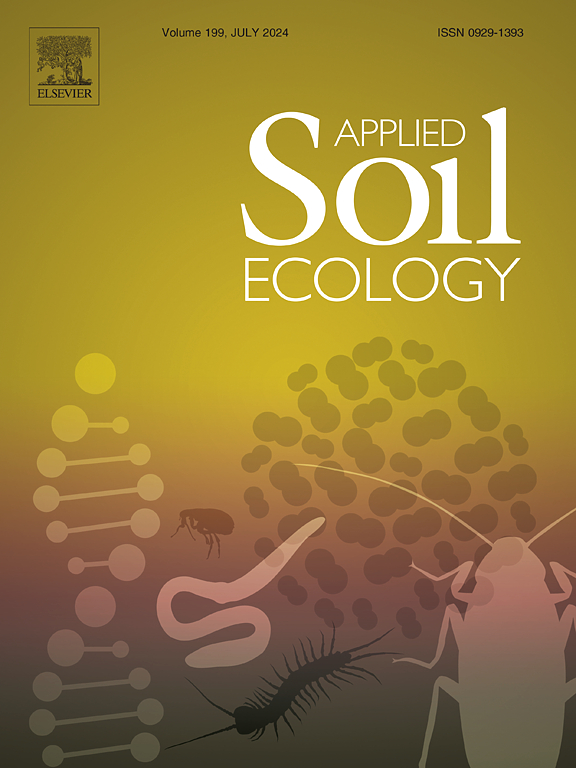Developing biocrust field cultivation techniques for soil restoration: An assessment of bacterial communities
IF 4.8
2区 农林科学
Q1 SOIL SCIENCE
引用次数: 0
Abstract
Biological soil crusts (biocrusts) are a coherent, thin soil surface layer, engineered and inhabited by a diverse community of moss, lichen, cyanobacteria, and other microorganisms. Biocrusts provide critical functions in dryland systems and may be lost from the ecosystem through physical disturbance or other global change drivers. Once biocrusts are lost, natural recovery can occur very slowly. This has led to the development of biocrust rehabilitation strategies, including cultivation of biocrust propagules to inoculate degraded sites. As the need for biocrust restoration grows in scale and across different regions, inoculum cultivation and application methods are being asked to keep up. In this work, we evaluate cyanobacterial community composition and abundance in greenhouse and field cultivation systems, with and without growth substrate and shade treatments. We also consider cultivation of locally and non-locally sourced biocrust inocula at a single cultivation facility on the Colorado Plateau. We found that field cultivation is a viable option for biocrust cultivation. For almost all cyanobacteria, habitat amelioration was necessary for growth in the field. Despite differences in inocula composition following cultivation, restoration outcomes five months after inoculation were poor with no significant increases in cyanobacterial abundance, soil chlorophyll a, or soil exopolysaccharide content. Thus, more work is needed to boost the initial growth and survival of biocrust inocula, regardless of the method of cultivation (i.e., greenhouse or field). Future work focused on assessing opportunities for habitat amelioration during application to improve biocrust establishment during this critical restoration phase would be highly valuable.
求助全文
约1分钟内获得全文
求助全文
来源期刊

Applied Soil Ecology
农林科学-土壤科学
CiteScore
9.70
自引率
4.20%
发文量
363
审稿时长
5.3 months
期刊介绍:
Applied Soil Ecology addresses the role of soil organisms and their interactions in relation to: sustainability and productivity, nutrient cycling and other soil processes, the maintenance of soil functions, the impact of human activities on soil ecosystems and bio(techno)logical control of soil-inhabiting pests, diseases and weeds.
 求助内容:
求助内容: 应助结果提醒方式:
应助结果提醒方式:


